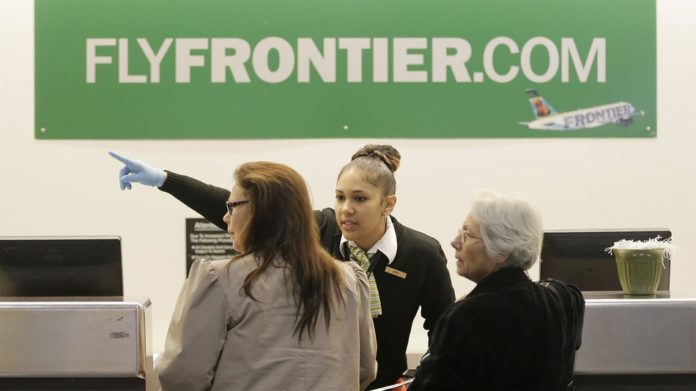How the CDC’s “Do Not Board” List Could Ground Health Care Workers Exposed to Ebola

A rarely-used “do not board” list that’s meant to keep those infected with communicable diseases—think infectious tuberculosis, SARS, or a viral hemorrhagic fever such as Ebola—from flying on commercial airlines, could impact health care workers who had contact with the Liberian man infected with Ebola who died earlier this month in Texas.
According to guidelines from the Centers for Disease Control published in August, anyone who’s had some (household contact) or high-risk (direct contact) exposure to Thomas Eric Duncan’s bodily fluids should also be kept from boarding a plane.
That would apply, at last count, to more than 70 health care workers involved in the index patient’s care.
And, most importantly, the second health care worker now infected with Ebola, Amber Joy Vinson, who flew back to Dallas from Cleveland and reported Ebola-like symptoms the next day.
CDC Director Dr. Tom Frieden said on Wednesday Vinson shouldn’t have boarded that plane. Although Vinson said she inquired with CDC officials about her flight and got the OK, according to CBS.
“…Vinson called the CDC several times before boarding the plane concerned about her fever.” CDC gave okay. http://t.co/Jhsxn66Dqh
— Brian Ries (@moneyries) October 15, 2014
Developed by federal agencies in June 2007, the do not board list is generally used for travelers with tuberculosis — the CDC gets approximately 125 reports each year of travelers arriving in the U.S. with active TB, according to unpublished data mentioned in an August 2012 Morbidity and Mortality Weekly Report.
Those travelers are generally added to the list and assigned what’s known as a public health lookout record. That record is then used to alert Customs and Border Protection officers if the traveler attempts to enter the country.

A health worker scans skin tempperature of the passengers with a thermal imaging camera upon their arrival at Alexander the Great airport near Macedonia’s capital Skopje, Friday, Oct. 10, 2014.
Image: Boris Grdanoski/Associated Press
“The Centers for Disease Control and Prevention (CDC), in collaboration with the Department of Homeland Security, has implemented Federal travel restriction procedures to protect travelers and the public from communicable diseases that constitute a public health threat,” the CDC says in a post on a website that hasn’t been updated years. “Persons who have a communicable disease constituting a public health threat, in addition to meeting specified criteria may be placed on the Do Not Board list and issued a Border Lookout, enforced by the Transportation Security Administration and Customs and Border Protection, respectively.”
These are the diseases they look for:

Image: CDC
But what if those carrying a disease are trying to fly within the United States — and they have been exposed to Ebola—like the Texas health care workers?
According to the CDC, the Secretary of the U.S. Department of Health and Human Services and public health officials have the authority to ask the CDC to place those individuals on the do not board list.

Image: Mashable
The August guidelines do not specify how to stop someone at risk from boarding a commercial aircraft. They simply read: “If air transport is clinically appropriate and indicated, only air medical transport (no travel on commercial conveyances permitted).”
Officials at Texas Health Presbyterian Hospital Dallas had directed the hospital staff to self-monitor and report any symptoms. Vinson, not knowing one of her colleagues would soon come down with Ebola, boarded a plane bound for Cleveland on Friday, Oct. 10, where she spent the weekend planning her wedding.
She returned to Dallas on Monday, Sept. 13, on Frontier Airlines Flight 1143. On Tuesday, she reported having a low-grade fever.
By Wednesday, she again boarded a plane. This time, however, she was wearing a yellow hazmat suit, bound for Emory University Hospital in Atlanta, Georgia with a confirmed case of Ebola.
Second US healthcare worker diagnosed w/ #Ebola walks onto plane headed to Atlanta for treatment pic.twitter.com/UQbA81Vt8I (@cbsdfw)
— Mashable News (@MashableNews) October 15, 2014
An Ebola-specific do not board list, at this point, is said to be evolving, according to WFAA-TV reporter Lauren Zakalik.
Dallas County Judge Clay Jenkins is reportedly considering it for the 70 or more health care workers exposed to the virus, the channel’s Demond Fernandez reports.
A CDC spokesperson said he could “neither confirm nor deny” existence of the do not board list.
A person who answered the phone at the CDC Dallas Quarantine Station, which oversees Dallas Fort-Worth International Airport, referred Mashable back to a CDC spokesperson.
We also attempted to reach Dallas County Judge Clay Jenkins, a local official who would appear to have the ability to recommend names to the CDC’s “do not board” list, but have not heard back.
Andrew Freedman contributed to this report.
Have something to add to this story? Share it in the comments.
